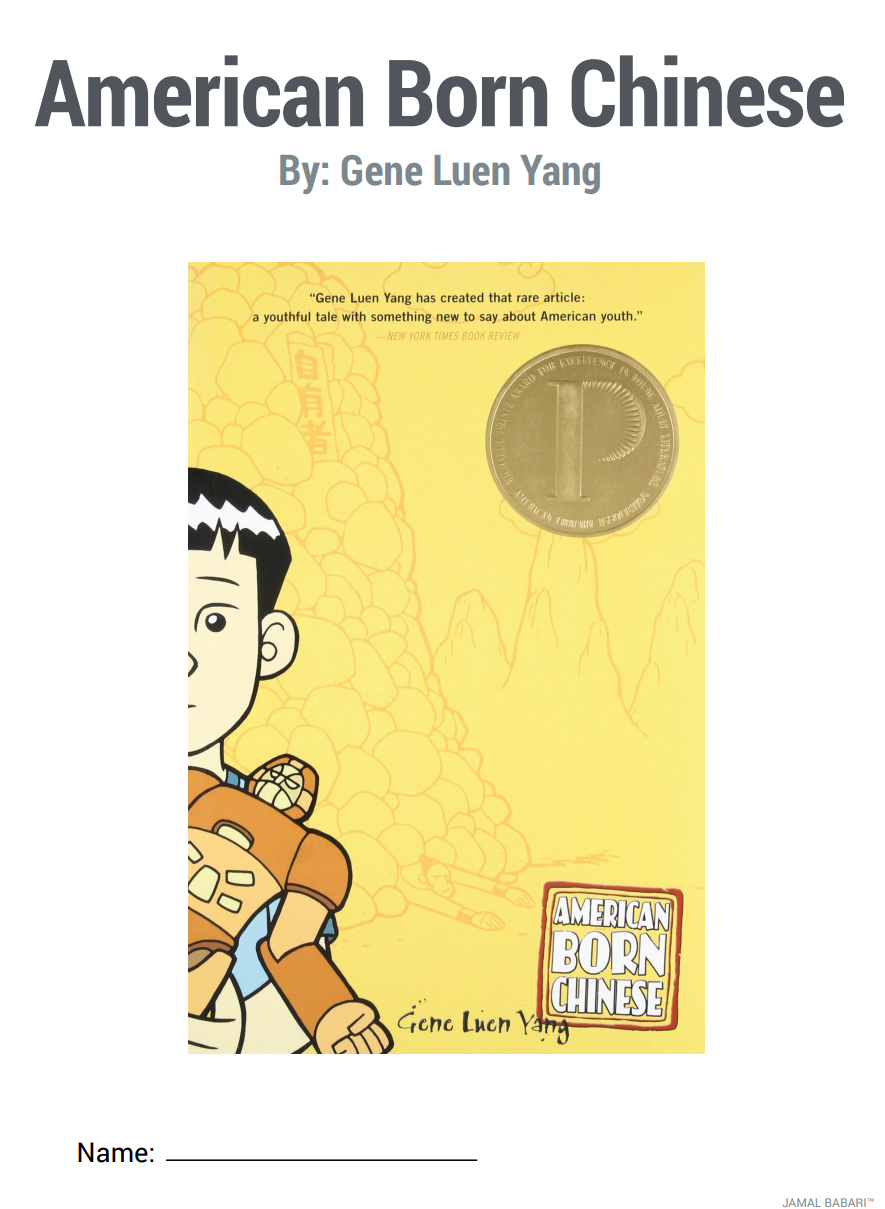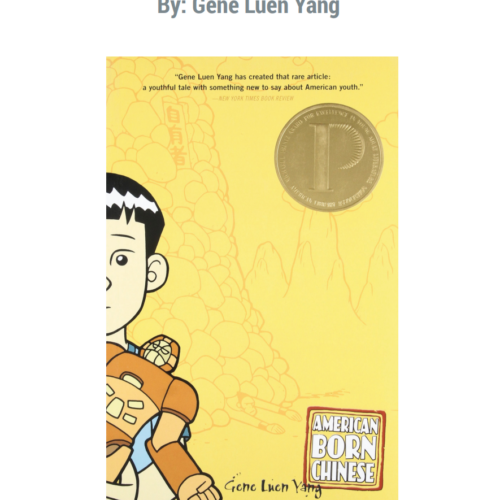Details
Pages
42 Pages
Subject
ELA, Critical Reasoning, Reading Comprehension & Learning
Languages
English
Product
Digital
Grade
4th, 5th, 6th
Resource Type
Assignments, Guided Reading, Lesson Plans
Standard
Common Core English Language Arts Standards
Description
TLDR:
62 Reading Comprehension Questions
15 Critical Thinking/Discussion Questions
3 Art Activities
3 Extensive Vocabulary Lists (for each section)
Novel Lesson Plan Extensive Explanation
Hello Amazing Teachers!
Thank you for considering/buying my product and I hope you and your students enjoy using it! Below I will delineate how I have designed my lesson plans and how you should utilize them in the classroom. There is some flexibility of course but the way I originally designed and used them should be beneficial for the average teacher right away. I have primarily used these lessons plans with Grades 4-7 and have also used them with advanced TESOL students as well.
All my lesson plans are novel studies and are generally broken into the following sections/sessions (although not always in the same order). These sections/sessions are also labeled with Roman numerals in ascending order for easier navigation:
1. Pre-Reading (just a few questions to pique students' interest in the book and give them a general idea of what it might be about if they haven't already begun reading)
2. Reading Comprehension (a variety of reading comprehension questions which allow students to understand the main parts of the story. Some chapters of the book may have more focus than others due to the following:
-There isn't good enough content in certain chapters to make into questions
-I've found better questions to ask within that specific chapter compared to others
-I hit a limit of questions I wanted to ask and then stopped to stay within that limit
otherwise there will be a million reading comprehension questions per section)
3. Critical Thinking (critical thinking questions designed to allow students to share their thoughts and opinions on a variety of topics. I have provided a lot of smaller follow up questions within each critical thinking question to help guide teachers, but I also recommend coming up with your own via the natural flow of conversation you have with students. Many times you won't need the follow up questions I provide but it doesn't hurt to have them. Additionally, I prefer to have students verbally share their answers with me and the class, but I understand this can be challenging for some classrooms and thus provide areas for the students to write for convenience)
4. Art Activity (simple art activities for students to participate in)
5. Vocabulary (extensive lists of vocabulary words for teachers to pick and choose which words would work best for their students' level. Sometimes vocabulary sections are unnecessary pending on the class, but I included them regardless. Definitions are not included in lesson plans as I sometimes assign it for homework and/or I assign sentences instead. It really is up to the teacher and what you want the students to get out of it. Some lists are exceptionally long as the content of the book may be more advanced and it allows the teacher to pick and choose which vocabulary words are best suited for their students' level; especially if using the same material for different age groups/grades)
6. Composition (essay topics for students to practice their writing and express their ideas further. Note that some lessons have more composition than others but always included)
Within each novel study, you will find that I have split the book up into different sections/sessions. Generally speaking, each lesson can take anywhere from 3-8 weeks/classes (meeting once a week) in order to finish a novel (depending on the novel size of course). Thus, I normally assign a certain number of chapters/pages to be completed each week. As an example, you will see something like:
Reading Comprehension-Chapters 1-4 (Pages 1-63) Critical Thinking-Chapters 1-4 (Pages 1-63) Art Activity-Chapters 1-4 (Pages 1-63) Vocabulary-Chapters 1-4 (Pages 1-63) Composition-Chapters 1-4 (Pages 1-63)
This indicates which chapters and pages students should read for each week/class and what will generally be completed within that time period. As a quick side note, you can assign homework from these sections as well. Some teachers assign a certain amount of vocabulary and tell students to find the definitions and/or write sentences for some of the words. Others will assign composition or maybe even some general research. I typically don't like to assign homework except the reading they need to do but I have had some schools force me to do so in the past, so I just tell the students to do an art activity which meets the requirements of the school and doesn't stress out the student or take a lot of their time to complete. Furthermore, when doing these novel lessons, I do not need to directly quiz or test my students as each section/session already does that via a variety of questions, extensive discussion and writing.
My classes are about 50 minutes long with a ten-minute break in between and are normally structured like this:
1. Introduction (5 minutes)-greetings, review of homework, answering questions, etc.
2. Review of Chapters (5-10 minutes)-this is optional, but I find it useful for students when they are answering the reading comprehension questions, and they tend to complete them faster as well when we review so I typically do it
3. Reading Comprehension (15-20 minutes)-this section can obviously vary but for me this is the average time when I personally go through each question with the class. If they are doing them individually, it might take a bit longer.
4. Critical Thinking (15-20 minutes)-similar to what I said for the previous section, these questions can vary but I do try to spend a sufficient amount of time on them and allow my students to participate in the discussion as much as possible.
5. Conclusion (5 minutes)-assign homework, answer any remainder questions, free time, etc.
Homework=vocabulary, art activity, and/or composition. These activities can also be used in class if you have the time or if some students finish faster than others, they will have something to do. Otherwise, assign it for homework or don't use them at all. Better to have extra content than not enough right?
So that's it! I hope all of this information was of some help and sorry if it was too long. Feel free to comment and let me know what you think of the lesson plans and/or if you have any suggestions for future ones. Additionally, if you want/need any further information, please ask so I can provide. In the meantime, I have numerous novel lesson plans so check out my other ones and consider supporting me even further. I hope you have a wonderful day and I wish you the best in all your teaching endeavors! Stay amazing and keep up the good work!
*The page numbers may vary pending on the versions of the books the teachers and students have and that is why I also included chapters in each lesson plan as well*
**These novel studies can also be used with ESL students and I have personally used each one with ESL classes successfully**
***Teachers copies are included with each purchase of the original novel lesson plan. The teachers copy provides answers ONLY for the Reading Comprehension Questions section***
62 Reading Comprehension Questions
15 Critical Thinking/Discussion Questions
3 Art Activities
3 Extensive Vocabulary Lists (for each section)
Novel Lesson Plan Extensive Explanation
Hello Amazing Teachers!
Thank you for considering/buying my product and I hope you and your students enjoy using it! Below I will delineate how I have designed my lesson plans and how you should utilize them in the classroom. There is some flexibility of course but the way I originally designed and used them should be beneficial for the average teacher right away. I have primarily used these lessons plans with Grades 4-7 and have also used them with advanced TESOL students as well.
All my lesson plans are novel studies and are generally broken into the following sections/sessions (although not always in the same order). These sections/sessions are also labeled with Roman numerals in ascending order for easier navigation:
1. Pre-Reading (just a few questions to pique students' interest in the book and give them a general idea of what it might be about if they haven't already begun reading)
2. Reading Comprehension (a variety of reading comprehension questions which allow students to understand the main parts of the story. Some chapters of the book may have more focus than others due to the following:
-There isn't good enough content in certain chapters to make into questions
-I've found better questions to ask within that specific chapter compared to others
-I hit a limit of questions I wanted to ask and then stopped to stay within that limit
otherwise there will be a million reading comprehension questions per section)
3. Critical Thinking (critical thinking questions designed to allow students to share their thoughts and opinions on a variety of topics. I have provided a lot of smaller follow up questions within each critical thinking question to help guide teachers, but I also recommend coming up with your own via the natural flow of conversation you have with students. Many times you won't need the follow up questions I provide but it doesn't hurt to have them. Additionally, I prefer to have students verbally share their answers with me and the class, but I understand this can be challenging for some classrooms and thus provide areas for the students to write for convenience)
4. Art Activity (simple art activities for students to participate in)
5. Vocabulary (extensive lists of vocabulary words for teachers to pick and choose which words would work best for their students' level. Sometimes vocabulary sections are unnecessary pending on the class, but I included them regardless. Definitions are not included in lesson plans as I sometimes assign it for homework and/or I assign sentences instead. It really is up to the teacher and what you want the students to get out of it. Some lists are exceptionally long as the content of the book may be more advanced and it allows the teacher to pick and choose which vocabulary words are best suited for their students' level; especially if using the same material for different age groups/grades)
6. Composition (essay topics for students to practice their writing and express their ideas further. Note that some lessons have more composition than others but always included)
Within each novel study, you will find that I have split the book up into different sections/sessions. Generally speaking, each lesson can take anywhere from 3-8 weeks/classes (meeting once a week) in order to finish a novel (depending on the novel size of course). Thus, I normally assign a certain number of chapters/pages to be completed each week. As an example, you will see something like:
Reading Comprehension-Chapters 1-4 (Pages 1-63) Critical Thinking-Chapters 1-4 (Pages 1-63) Art Activity-Chapters 1-4 (Pages 1-63) Vocabulary-Chapters 1-4 (Pages 1-63) Composition-Chapters 1-4 (Pages 1-63)
This indicates which chapters and pages students should read for each week/class and what will generally be completed within that time period. As a quick side note, you can assign homework from these sections as well. Some teachers assign a certain amount of vocabulary and tell students to find the definitions and/or write sentences for some of the words. Others will assign composition or maybe even some general research. I typically don't like to assign homework except the reading they need to do but I have had some schools force me to do so in the past, so I just tell the students to do an art activity which meets the requirements of the school and doesn't stress out the student or take a lot of their time to complete. Furthermore, when doing these novel lessons, I do not need to directly quiz or test my students as each section/session already does that via a variety of questions, extensive discussion and writing.
My classes are about 50 minutes long with a ten-minute break in between and are normally structured like this:
1. Introduction (5 minutes)-greetings, review of homework, answering questions, etc.
2. Review of Chapters (5-10 minutes)-this is optional, but I find it useful for students when they are answering the reading comprehension questions, and they tend to complete them faster as well when we review so I typically do it
3. Reading Comprehension (15-20 minutes)-this section can obviously vary but for me this is the average time when I personally go through each question with the class. If they are doing them individually, it might take a bit longer.
4. Critical Thinking (15-20 minutes)-similar to what I said for the previous section, these questions can vary but I do try to spend a sufficient amount of time on them and allow my students to participate in the discussion as much as possible.
5. Conclusion (5 minutes)-assign homework, answer any remainder questions, free time, etc.
Homework=vocabulary, art activity, and/or composition. These activities can also be used in class if you have the time or if some students finish faster than others, they will have something to do. Otherwise, assign it for homework or don't use them at all. Better to have extra content than not enough right?
So that's it! I hope all of this information was of some help and sorry if it was too long. Feel free to comment and let me know what you think of the lesson plans and/or if you have any suggestions for future ones. Additionally, if you want/need any further information, please ask so I can provide. In the meantime, I have numerous novel lesson plans so check out my other ones and consider supporting me even further. I hope you have a wonderful day and I wish you the best in all your teaching endeavors! Stay amazing and keep up the good work!
*The page numbers may vary pending on the versions of the books the teachers and students have and that is why I also included chapters in each lesson plan as well*
**These novel studies can also be used with ESL students and I have personally used each one with ESL classes successfully**
***Teachers copies are included with each purchase of the original novel lesson plan. The teachers copy provides answers ONLY for the Reading Comprehension Questions section***
TLDR: 62 Reading Comprehension Questions 15 Critical Thinking/Discussion Questions 3 Art Activities 3 Extensive Vocabulary Lists (for each section) Novel Lesson Plan Extensive Explanation Hello Amazing Teachers! Thank you for considering/buying my product and I hope you and your students... more




























